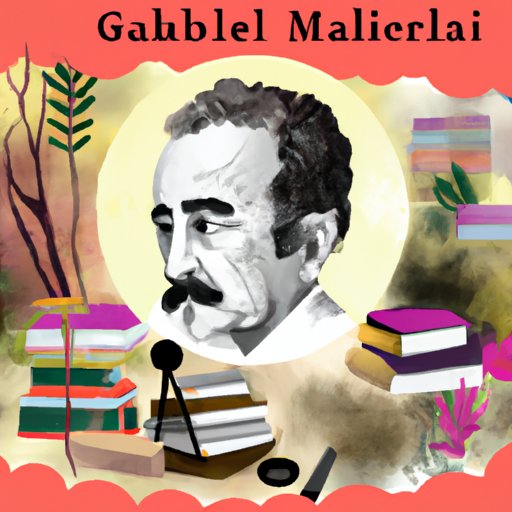Introduction
Magical realism is a style of literature that blends elements of the real world with magical or supernatural elements. The genre has become popular over the years and can be seen in films, television shows, and books. In this article, we’ll explore the origins and history of magical realism, look at key figures in the genre, provide examples of magical realism, compare it to other genres, and discuss how it influences culture and readers.

Origins and History of Magical Realism
The term “magical realism” was first used by German art critic Franz Roh in 1925 to describe a visual arts movement. It wasn’t until the 1950s that the term began to be used to describe literature, when Cuban author Alejo Carpentier introduced it in his book “The Kingdom of This World.” Since then, writers from around the world have embraced the genre and created their own works of magical realism.
In Latin America, authors such as Gabriel Garcia Marquez, Isabel Allende, and Jorge Luis Borges wrote stories that blended reality with fantasy. In Europe, authors like Salman Rushdie and Angela Carter used magical realism in their works. Meanwhile, authors like Haruki Murakami have used the genre to explore modern life in Japan.
Key Figures in Magical Realism
Gabriel Garcia Marquez is one of the most influential figures in magical realism. His work, including “One Hundred Years of Solitude,” is praised for its vivid imagery and dreamlike quality. He often used magical elements to explore themes of family, politics, and history in his novels.
Isabel Allende is another major figure in magical realism. Her works, such as “The House of Spirits” and “Of Love and Shadows,” are known for their lyrical prose and exploration of the female experience. She often uses magical elements to explore issues of power, identity, and culture.
Examples of Magical Realism
There are many works of magical realism that have become popular over the years. One of the most well-known is “The Alchemist” by Paulo Coelho, which tells the story of a young man’s spiritual journey. Other popular works include “Beloved” by Toni Morrison, “Life of Pi” by Yann Martel, and “The Brief Wondrous Life of Oscar Wao” by Junot Diaz.
Magical realism has also been used in films and television shows, such as “Pan’s Labyrinth,” “Big Fish,” “The Witch,” “Stranger Things,” and “Coco.” These films explore themes such as identity, family, and death through the use of fantastical elements.

Comparing and Contrasting Magical Realism with Other Genres
Magical realism is often compared to other genres such as fantasy and surrealism. While these genres all feature elements of the supernatural, there are some key differences between them. Fantasy typically involves an alternate world with its own rules and laws. Surrealism, on the other hand, focuses on the irrational and unexpected. Magical realism, however, is rooted in reality and often explores social and political issues.

How Magical Realism Influences Culture
Magical realism has had a profound impact on culture. Its influence can be seen in the works of artists such as Frida Kahlo, Salvador Dali, and Rene Magritte. It has also been used in music, from jazz compositions to folk songs. Finally, the genre has been embraced by social movements, such as the civil rights movement in the United States.
Impact of Magical Realism on Readers
Magical realism has the power to connect people from different backgrounds. As author Salman Rushdie said, “Magical realism allows us to see the world through multiple lenses; the ordinary and the extraordinary, the mundane and the fantastic, the real and the surreal.” It also has the ability to inspire readers to look at the world in new and unexpected ways.
Conclusion
In conclusion, magical realism is a genre of literature that blends reality with the supernatural. It has its roots in Latin America, but its influence can be seen around the world. Key figures in the genre include Gabriel Garcia Marquez and Isabel Allende, while popular works include “The Alchemist” and “The House of Spirits.” Magical realism has had a profound impact on culture, from art and music to social movements, and its power to connect and inspire readers is undeniable.
(Note: Is this article not meeting your expectations? Do you have knowledge or insights to share? Unlock new opportunities and expand your reach by joining our authors team. Click Registration to join us and share your expertise with our readers.)
